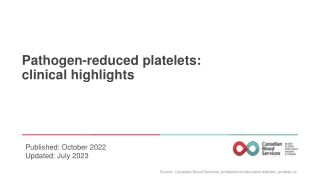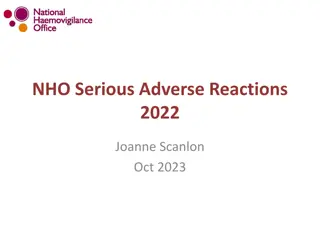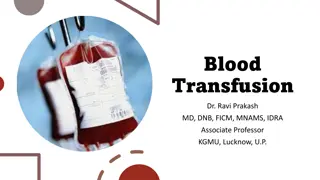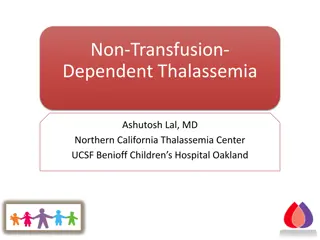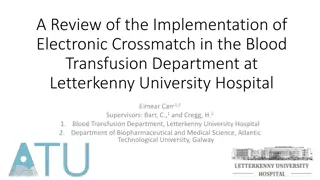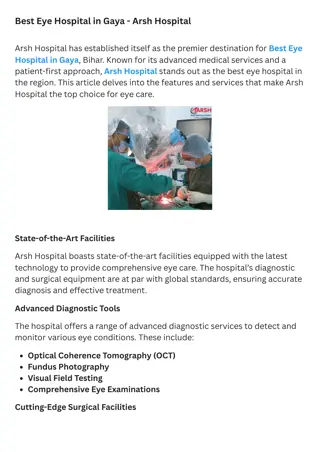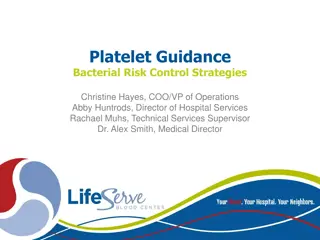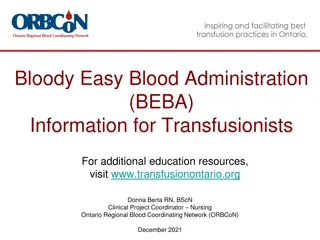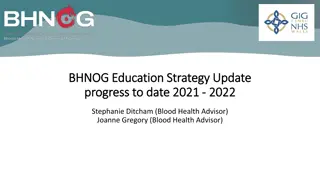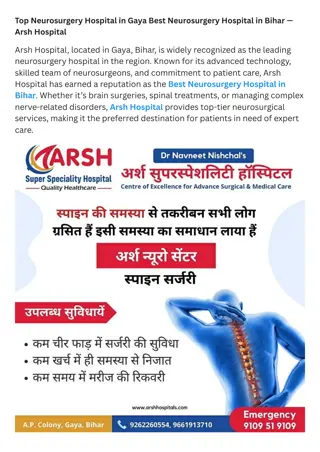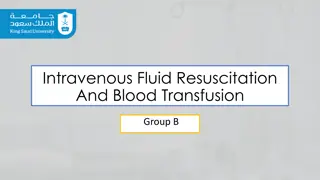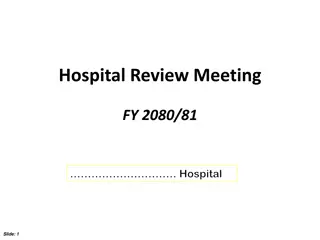Hospital Transfusion IT Guidelines - Overview and Updates
Comprehensive guidelines for Hospital Transfusion IT systems by Julie Staves, Transfusion Lab Manager at Oxford University Hospitals Foundation Trust. Explains the need for guidelines in ensuring patient safety, the structure of the guideline, recent changes, and new developments. Covers essential topics such as infrastructure requirements, data integrity, and the classification of IT systems as in vitro diagnostic medical devices.
Download Presentation

Please find below an Image/Link to download the presentation.
The content on the website is provided AS IS for your information and personal use only. It may not be sold, licensed, or shared on other websites without obtaining consent from the author. Download presentation by click this link. If you encounter any issues during the download, it is possible that the publisher has removed the file from their server.
E N D
Presentation Transcript
Hospital Transfusion IT guidelines Julie Staves Transfusion Lab Manager Oxford University Hospitals Foundation Trust
History 2000 Guidelines for Blood Bank Computing 2006 The specification and use of Information Technology (IT) in Blood Transfusion Practice 2014 Specification, implementation and Management of Information Technology (IT) systems in Hospital Transfusion Laboratories
Why do we need a guideline? Every transfusion in the UK relies on IT systems to ensure patient safety From Collecting donor information through to the administration of the components to the patients. The Blood services IT is very bespoke and not covered in the guidelines Hospital laboratories very widely as does the IT expertise within in A guideline is required to ensure everyone is working to a minimum safe standard Also helps IT suppliers to ensure they are meeting the needs of the hospital laboratories
Writing Group Chair : Julie Staves Members: Chloe George - Nishil Patel Paul Ashford - Megan Rowley Tom Bullock - Nigel Sargant Tony Coates Linda Lodge
Structure of the guideline This guideline has always been long and complex The rewrite was too long to be accepted in a publication Some of the sections have been moved into appendices This will allow publication Help people use the guideline
Whats changed? Clarification of the infrastructure requirements including more detailed information of the expectation on the environments required. Additional information regarding data integrity of patient records to ensure these are in line with data protection legislation
Whats new? Information regarding IT systems being classed as an in vitro diagnostic (IVD) medical device All LIMS systems utilise algorithms Eg Prevention of issuing an ABO incompatible product As such they are now classed as an IVD medical device.
Clinical decision support Planning for electronic prescriptions and clinical decision support must be robust Include the usual patient identifiers Products required must be specified Single unit ordering for non bleeding encouraged Use national triggers to allow for bench marking Monitor progress to ensure it is being used correctly
Business continuity planning All systems should include business continuity management Must be in line with ISO 22301 Tested to demonstrate effectiveness and identify any limitations Must include the recovery phase and how the IT system will be brought upto date
Red cell genotyping The use of molecular technology to provide a full red cell genotype is now routine in certain patient groups Electronic transfer of transfer of results from the reference service is required The use of algorithms to search for matched red cell units which are in stock is required.
Data The use of data has changed considerably in the last 5 years Easy access to data essential Use of data must comply with GDPR guidance Consider provision to third part organisations Blood Stocks Management Scheme NHSi benchmarking etc
Clinical Audit Use of standard data set Codes for clinical information Indication for transfusion Reason for transfusion Automatic links to other laboratory data ( eg Hb, PT) is advantageous
Use of algorithms Use of algorithms to check that laboratory staff have selected the most suitable unit(s) of red cells was included in the current guideline This has been expanded and clarification added Provision of FFP if it is not possible to determine a patient s blood group Provision of all component groups to patients undergoing a blood group change due to a haematological transplant
Additions We have provided some templates to aid Transfusion Laboratory Managers Operational Requirement Document User Requirement Document Gap analysis tool to allow hospitals to assess their compliance with the guidelines and decide on an action plan.
Whats not changed? 2 key things Entry of unit information by use of an Electronic Dispatch note should be the standard Changes in patient demographics within the LIMS must be controlled by the Transfusion Laboratory. The wording has been strengthened!
Recording of gender We haven t been able to address this somewhat controversial issue The recording of a patient s sex and gender is problematic It s a problem across healthcare There are currently no national recommendations and as such its difficult for 1 speciality to include in their own specific guidelines This is being flagged at a national level
Progress Guidelines have been resubmitted for publication Will be available soon
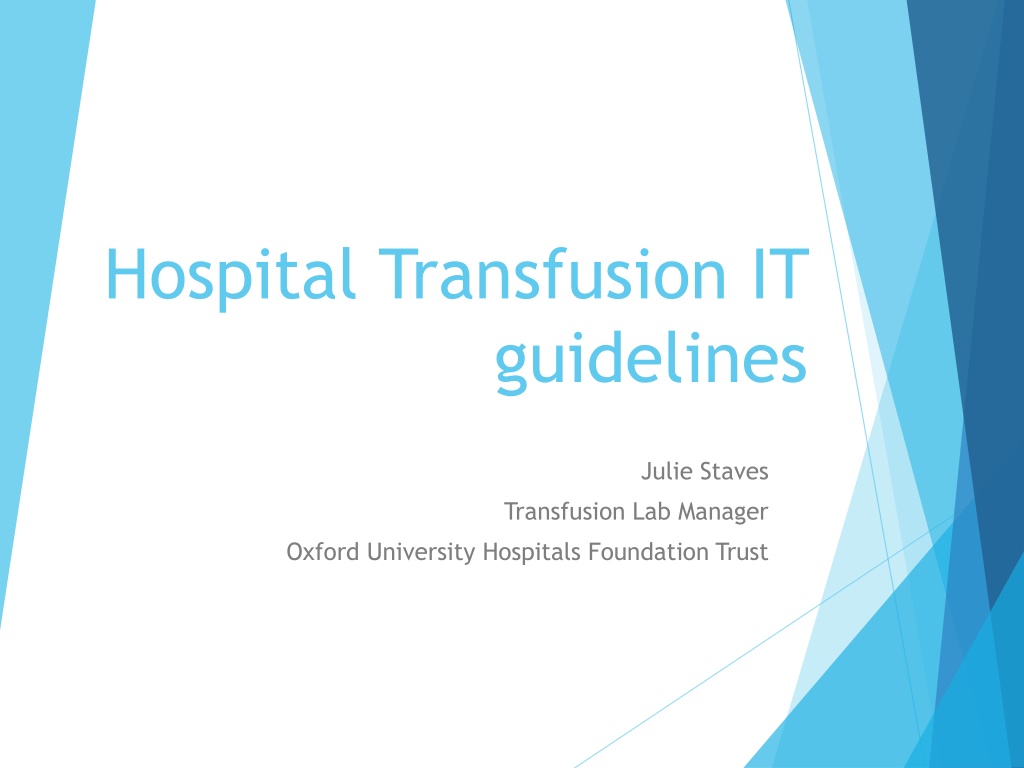
 undefined
undefined




